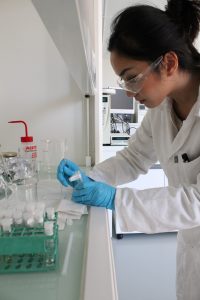 Since 2013, the thesis prize “Rennes School of Chemistry – René Dabard” has distinguished each year a doctor, without restriction of establishment, for his thesis work carried out in one of the following fields:
Since 2013, the thesis prize “Rennes School of Chemistry – René Dabard” has distinguished each year a doctor, without restriction of establishment, for his thesis work carried out in one of the following fields:
- molecular chemistry
- solid and materials chemistry
- chemistry and environmental engineering .
This prize rewards a young researcher whose work, of high scientific quality, has contributed to the advancement of scientific knowledge, technological innovation and a better understanding of social and environmental issues.
The thesis prize is awarded by a jury made up of renowned personalities from the academic sector and the socio-economic world.
The evaluation criteria relate to the originality of the research theme, risk taking and mobility, scientific production (publications, patents, prices).
Three laureates are distinguished each year and receive a prize of € 1,500 and two prizes of € 500 given by the Fonds de Dotation de l’ENSCR.
This thesis prize is open to all doctors of chemistry in France.
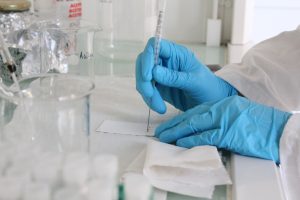 For the 2020 Thesis Prize, candidates must have defended their thesis during the year 2019..
For the 2020 Thesis Prize, candidates must have defended their thesis during the year 2019..
The dossier of maximum five pages includes a CV and a summary of the thesis work, outlining the perspectives opened up by the results obtained during the thesis.
This file must be sent by email to direction-scientifique@ensc-rennes.fr no later than April 24, 2020.
Contact: direction-scientifique@ensc-rennes.fr ou 02 23 23 80 68The 2019 winners
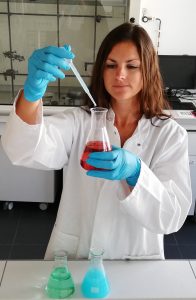 The 1st price (1500 €) was won by Marie CLAVERIE who carried out her thesis at the Institute of Chemistry of Condensed Matter of Bordeaux (ICMCB) in partnership with the laboratory of Environmental Geosciences of Toulouse (GET) and the company IMERYS .
The 1st price (1500 €) was won by Marie CLAVERIE who carried out her thesis at the Institute of Chemistry of Condensed Matter of Bordeaux (ICMCB) in partnership with the laboratory of Environmental Geosciences of Toulouse (GET) and the company IMERYS .
“Talc, a common mineral in our daily lives, is also commonly used as a mineral filler in papers, plastics, cosmetics … Indeed, its lamellarity, whiteness, and chemical inertness are key properties in the industry and especially in that of beauty. However, the use of natural talc in cosmetics is limited by the absence of deposits of pure talc, which is systematically associated with other minerals (chlorite, pyrite, etc.). Talc synthesis is the only way to obtain a mineral whose mineralogical and chemical purities are controlled. This project presents the development of a talc synthesis process. The synthetic talc obtained is distinguished from its natural counterpart by its size (between 0.1 and 1 micrometer against several tens of micrometers), by its mineralogical purity (single phase), its chemical purity and by its hydrophilic nature (unlike natural talc which is hydrophobic ). Synthetic talc is the first talc mineral naturally stable in water without undergoing any physical or chemical treatment. The other innovative aspect of this project lies in the implementation of a very rapid synthesis process (only ten seconds), based on specific properties of supercritical water, allowing industrialization in a context of sustainable development . “
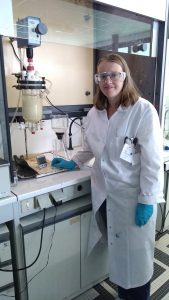 A second ex-aequo prize (€ 500) in alphabetical order was awarded to Maria Gonzalez Martinez who completed her thesis in the Laboratory for the Preparation of Bioresources at CEA in Grenoble, in collaboration with the Laboratory of Chemical Engineering of Toulouse.
A second ex-aequo prize (€ 500) in alphabetical order was awarded to Maria Gonzalez Martinez who completed her thesis in the Laboratory for the Preparation of Bioresources at CEA in Grenoble, in collaboration with the Laboratory of Chemical Engineering of Toulouse.
“Today in Europe there is an interesting diversity of biomass resources, with deciduous and coniferous trees, herbaceous crops and agricultural by-products. These resources are often characterized by seasonal, delocalized production and in small quantities. For this reason, the Mobile Flip project proposes the recovery of biomass residues by flexible and mobile units, applicable on a local scale. One of the technologies proposed is roasting, a gentle heat treatment which produces a roasted solid suitable to replace coal, among other innovative applications, and volatile materials, including condensable species potentially with high added value in chemistry. This thesis work served to propose a model capable of predicting the production of roasted solid and volatile matter according to the type of biomass and operating conditions, applicable to the control of the mobile unit and to the optimization of the roasting process. . In this model, the diversity of biomass is described by its main macromolecular composition in cellulose, hemicelluloses and lignin. To build the model, roasting experiments on a laboratory scale with the raw biomass and their extracted components were carried out in a chemical regime. The model has been refined and validated with a large panel of agricultural and forest biomass representative of European diversity ”.
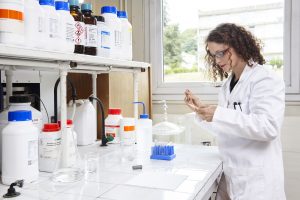 Lucie JARRIGE who carried out her thesis at the Institute of Chemistry of Natural Substances (ICSN) in Gif-sur-Yvette (91).
Lucie JARRIGE who carried out her thesis at the Institute of Chemistry of Natural Substances (ICSN) in Gif-sur-Yvette (91).
“Often criticized by the media and enjoying a bad public opinion, chemistry is nevertheless crucial to the economic development and the well-being of our society. Medicines, cosmetics, polymers, electronic components, and even textiles are just a few examples of the chemical compounds that surround us and that improve our daily lives. However, at a time when environmental protection is at the heart of concerns, chemistry must also apply to reduce its impact on our planet, this is why the development of methods for the preparation of molecules respectful of environment is arousing great interest within the scientific community. It is in this context of sustainable chemistry that my thesis work took place. Among more than 20,000,000 existing organic molecules, heterocycles constitute one of the most important classes. These chemical compounds are characterized by a cyclic chain, comprising one or more atoms other than carbon. These molecules are found in a wide range of natural products but also in drugs currently on the market. My thesis work therefore aimed to develop new methods of preparing heterocycles, efficient, greener and respectful of the environment. For this, two innovative themes, the activation of molecules by visible light and the use of small chiral organic molecules as catalysts, were used. Thus, many original heterocycles were prepared quickly, in a single step, with excellent results, without waste and involving non-toxic chemical reagents.”
For information, Lucie also received the Dina Surdin Prize awarded by the Société Chimique de France, organic chemistry division.
The 2018 winners
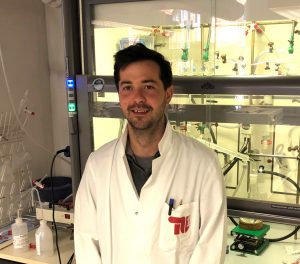 The 1st price (1500 €) was won by Clément CHAUVIER who carried out his thesis at the CEA in Saclay (DRF / IRAMIS / NIMBE).
The 1st price (1500 €) was won by Clément CHAUVIER who carried out his thesis at the CEA in Saclay (DRF / IRAMIS / NIMBE).
“The fossil resources of gas and oil not only cover the majority of the world’s energy needs, but also provide the elementary carbon bricks useful for entire sectors of the chemical industry. However, the massive use of these fossil fuels poses a major ecological problem, global warming, which will double in the long term as a problem of availability of these resources. To overcome these difficulties, one of the solutions envisaged consists in gradually abandoning fossil hydrocarbons in favor of renewable carbon resources such as CO2 or biomass as energy storage media and / or as sources of chemicals. Basically, such an endeavor requires the development of chemical reduction reactions, that is to say, which allow oxygen atoms (O) to be replaced by hydrogen atoms (H). While millions of years of evolution have equipped Nature with the appropriate machinery to promote this type of transformation, solicited for example during photosynthesis which converts CO2 into sugars (CnH2nOn), it is much more difficult to achieve them by laboratory in mild conditions and with great selectivity. The main objective of my thesis work was to propose and then apply new concepts in reduction chemistry, in particular to include the latter in the context of green chemistry. I have thus clarified what a renewable reducer should be, that is to say a reducer which operates by minimizing the energy demand of the reduction process while ensuring optimal atom economy. Based on these reflections, I studied the reducing properties of two new types of renewable chemical reducing agent that are boron and silicon formates. I have shown that these can advantageously replace other non-renewable reducers conventionally used in organic chemistry, thus making a large class of chemical reaction more durable. “
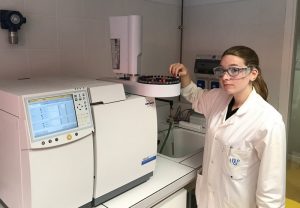 A second ex-aequo prize (500 €) was awarded to Laëtitia CESARI who carried out her thesis in the Reactions and Process Engineering laboratory (LRGP UMR 7274) in Nancy.
A second ex-aequo prize (500 €) was awarded to Laëtitia CESARI who carried out her thesis in the Reactions and Process Engineering laboratory (LRGP UMR 7274) in Nancy.
“Lignin is one of the main components of wood along with cellulose and hemicelluloses. Its gigantic structure is the result of the random association of different molecules. By heating this lignin very quickly to high temperature, it is possible to break the bonds connecting these compounds. This gives a very viscous paste called bio-oil. In it, many compounds with similar forms – phenolic compounds – but with distinct therapeutic properties, coexist and can be extracted for future applications. The latter are generally recovered using several extraction steps involving aqueous and organic solvents. The current challenges for lignin are therefore to succeed in valuing it as an energy resource complementary to petroleum for the production and extraction of phenolic compounds. During my doctorate, I had the opportunity to understand different complementary approaches – molecular simulation, experimental measurements and sizing of industrial units – in order to improve these extraction processes. My work also focused on the search for new solvents, more efficient and more respectful of the environment for the extraction of these compounds. “The use of ionic liquids in place of organic solvents is a promising alternative by improving the efficiency of extraction, while reducing the toxicity and costs associated with the use of conventional organic solvents.”
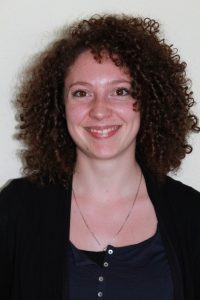 And to Cassandre Kouvatas (500 €), who completed his thesis at the National School of Chemistry of Rennes, Institute of Chemical Sciences of Rennes.
And to Cassandre Kouvatas (500 €), who completed his thesis at the National School of Chemistry of Rennes, Institute of Chemical Sciences of Rennes.
“Maleic anhydride is a chemical compound synthesized for the first time in the 1830s. It is at the center of many commercial applications and its demand on a world scale did not stop increasing (production in Europe in 2016: 325 ktonnes). This chemical compound is produced industrially by oxidation of butane at temperature. To be effective, this reaction is catalyzed by particular powdery compounds: vanadium phosphates (OPV). However, the detailed structures of these solids of interest, as well as their mode of operation, are still poorly understood. My thesis work therefore consisted in studying these OPV materials, in order to better understand the link between their crystalline structures and their catalytic properties. In order to obtain the most complete information possible, my work was based on a multi-scale approach to studies. This implies a combination of various characterization methods allowing to probe matter at different levels: X-ray diffraction (information on structures on a global scale), Nuclear Magnetic Resonance (NMR) of the solid (local probe of matter at the atomic scale), and quantum calculations allowing to obtain characteristic parameters of the material from structural hypotheses to be compared with the experimental data). The interest of these studies lies in the fact that they were carried out both ex situ (at room temperature), but also and above all operando, that is to say under catalytic conditions (temperature and reactive atmosphere ), in order to study these solid catalysts as closely as possible to industrial conditions. The aim is therefore to improve the understanding of the structures of these compounds and the transitions between them, in particular under conditions close to the catalytic process. “
The 2017 winners
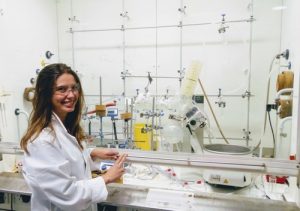 The 1st prize (€ 1,500) was won by Iuliia MYRGORODSKA, who completed her thesis at the University of Nice Sophia Antipolis.
The 1st prize (€ 1,500) was won by Iuliia MYRGORODSKA, who completed her thesis at the University of Nice Sophia Antipolis.
“The drug synthesized by the hero of Breaking Bad and a Vicks inhaler to decongest the nose are based on methamphetamine. With a tiny difference: the psychotropic molecule and the one that decongests are identical, but one is the image of the other by reflection in a mirror; much like the left hand and the right hand. In nature, only certain amino acids (left) are used to form proteins while DNA double helices are based on certain sugars (right). The chemical reactions implemented in the laboratory to try to reproduce the formation of the first molecular bricks have never succeeded in obtaining such selectivity; sugars and amino acids are always formed as a mixture of 50% of “left” molecules / 50% of “right” molecules. This puzzle was recently listed in the journal Nature as one of the five biggest puzzles unsolved by science. My thesis project aims to understand how the molecules of life were formed in a single right or left form. For this, I analyzed interstellar ice produced in the laboratory where I found a variety of molecules including sugars and amino acids. By studying the interactions of light with matter to form preferentially right or left molecules, I established the link between excess of molecules left or right and properties of the light used. All this in order to better understand our origins. “
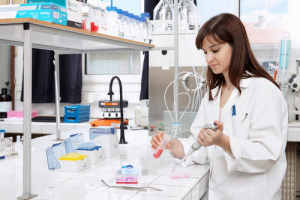
Fondation L’Oréal
The 2nd ex-aequo prize (500 €) was awarded to Cécile ECHALIER who completed her thesis at the University of Montpellier under the supervision of Pr Gilles Subra (IBMM, Institut des Biomolécules Max Mousseron) and Ahmad Mehdi (ICGM, Institut Charles Gerhardt Montpellier).
“Replacing your worn cartilage, regenerating an injured kidney, receiving an artificial skin graft … these are all challenges in the area of tissue engineering. Tissue engineering is a specialty of regenerative medicine dedicated to the production of living tissue designed for use as grafts or replacement organs. Developments in this area could solve the shortage of organ donors, which is a major public health problem. To achieve its objective, tissue engineering uses biomaterials capable of mimicking the natural environment of cells to guide them towards the development of new tissue. My thesis presents a new method of preparing bioactive materials which is based on the complementary skills of the two research groups involved in this project. On the one hand, the “Amino acids, Heterocycles, Peptides and Proteins” team of the Max Mousseron Institute of Biomolecules which has expertise in organic chemistry at the interface with biology. On the other hand, the “Molecular Chemistry and Organization of Solids” team at the Charles Gerhardt Institute in Montpellier which specializes in inorganic chemistry and the chemistry of materials. This collaboration has given rise to molecules at the interface between living chemistry and the inorganic world. These hybrid molecules are able to assemble under mild conditions through chemical bonds. We use them like LEGO bricks to form gels that have interesting properties in biology. The preparation of gels is extremely simple and completely flexible. On the one hand, any molecule of biological interest can be incorporated and thus give the material the desired biological activity. On the other hand, LEGO molecules are capable of pairing whatever their type, so we can combine them to form a multifunctional material. The flexibility of the method that we have developed has made it possible to envisage a large number of applications which have been protected by a patent. During my last year of thesis, several research programs were launched to move from proof of concept to medical applications. In particular, the LEGOGEL project funded by the ANR aims to repair osteo-articular lesions in patients who suffer from osteoarthritis. I defended my thesis in November 2016 and I am currently in post-doctorate at EMBL (European Molecular Biology Laboratory, Heidelberg) in Germany in the group of Dr. Carsten Schultz. In collaboration with a GSK subsidiary, Cellzome, I am developing molecular tools to study the mechanism of action of drugs. “
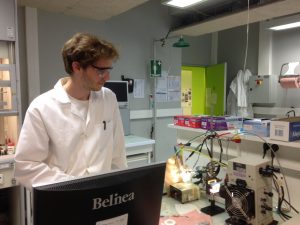 The 2nd ex-aequo prize (500 €) was awarded to Niklas VON WOLFF who carried out his thesis at CEA Saclay under the supervision of Thibault Cantat.
The 2nd ex-aequo prize (500 €) was awarded to Niklas VON WOLFF who carried out his thesis at CEA Saclay under the supervision of Thibault Cantat.
“In the context of the accumulation of CO2 in the atmosphere, climate change and the depletion of fossil resources in the future, it is interesting to recycle CO2 into products with high added value. Indeed, CO2 represents an inexpensive, non-toxic and abundant form of carbon and its use can help create a sustainable chemical industry, as well as energy carriers with a closed carbon cycle. The catalytic reduction of CO2 to methanol (by hydroboration) is then a very interesting reaction from this point of view. In the laboratory, we have developed a new non-metallic catalyst (avoiding the use of expensive or scarce metals) to understand the activation of CO2 in this transformation. Even if methanol can be used as a molecular brick and a starting material for the chemical industry, from a “value added” point of view it is not the most attractive candidate. Thus, we have developed a new method for the formation of esters (products used in perfumes, plastics, etc.) from CO2 by creating new C – C bonds. In particular, we have shown that CO2 plays a double role in this transformation. It is both reactive and catalyst, allowing the synthesis of esters in a single step from inexpensive and abundant starting materials (CO2 and silanes). Understanding this new reaction has also allowed us to recycle other chemical waste. In particular, we were able to show that sulfur dioxide (responsible for acid rain), can be used as starting material (and catalyst) for the one-step synthesis of sulfones and sulfonamides, functionalities found in many pharmaceutical products “best -sellers ”(sildenafil, rosuvastatin, etc.). “
The 2016 winners
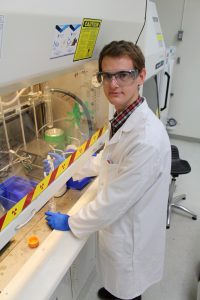 The 1st prize (1500 €) was won by Gauthier DEBLONDE whose research work focused on the development of a production process for niobium and tantalum that is more respectful of the environment. The young researcher carried out his thesis under the supervision of Dr. A.Chagnes and Pr. G.Cote at ENSCP, the National School of Chemistry in Paris. Her thesis was sponsored by the Eramet Research research center. Today, Gauthier is doing a post-doctorate at the prestigious Lawrence Berkeley National Laboratory (Berkeley, California, USA) (13 Nobel Prize winners). He works within the team of Dr. Rebecca Abergel on the thermodynamics of actinides (actinium, thorium, uranium, plutonium, americium …) and their interactions with biological systems. The main goals of this research being, at the times, to understand the behavior of these toxic elements in the human body in the event of accidental ingestion or a terrorist attack, but also to use some of their less toxic isotopes as a source of radiation to treat certain forms of cancer ( alpha immunotherapy).
The 1st prize (1500 €) was won by Gauthier DEBLONDE whose research work focused on the development of a production process for niobium and tantalum that is more respectful of the environment. The young researcher carried out his thesis under the supervision of Dr. A.Chagnes and Pr. G.Cote at ENSCP, the National School of Chemistry in Paris. Her thesis was sponsored by the Eramet Research research center. Today, Gauthier is doing a post-doctorate at the prestigious Lawrence Berkeley National Laboratory (Berkeley, California, USA) (13 Nobel Prize winners). He works within the team of Dr. Rebecca Abergel on the thermodynamics of actinides (actinium, thorium, uranium, plutonium, americium …) and their interactions with biological systems. The main goals of this research being, at the times, to understand the behavior of these toxic elements in the human body in the event of accidental ingestion or a terrorist attack, but also to use some of their less toxic isotopes as a source of radiation to treat certain forms of cancer ( alpha immunotherapy).
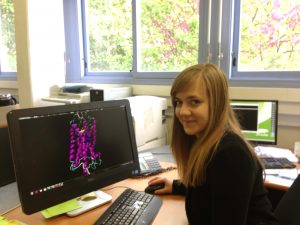 The 2nd prize (500 €) was awarded to Claire de March for her work on the link between a molecule and its odor. Claire completed her thesis at the University of Nice Sophia Antipolis in the ICN (Institute of Chemistry of Nice) within the APSM team (Arôme Parfum Synthèse et Modelisation). Currently in post-doctorate at Duke University – Medical center in Durham (USA), Claire works in the team of Professor Hiroaki Matsunami in the department of Molecular Genetics and Microbiology (MGM). The team of Pr. Hiroaki Matsunami is recognized worldwide for its successes in the expression in vitro of olfactory receptors, thus making it possible to study their interaction with odorants in a simple and fast way. She brings all her expertise in chemistry and molecular modeling to this laboratory, thus combining three of the disciplines necessary for the study of our sense of olfaction.
The 2nd prize (500 €) was awarded to Claire de March for her work on the link between a molecule and its odor. Claire completed her thesis at the University of Nice Sophia Antipolis in the ICN (Institute of Chemistry of Nice) within the APSM team (Arôme Parfum Synthèse et Modelisation). Currently in post-doctorate at Duke University – Medical center in Durham (USA), Claire works in the team of Professor Hiroaki Matsunami in the department of Molecular Genetics and Microbiology (MGM). The team of Pr. Hiroaki Matsunami is recognized worldwide for its successes in the expression in vitro of olfactory receptors, thus making it possible to study their interaction with odorants in a simple and fast way. She brings all her expertise in chemistry and molecular modeling to this laboratory, thus combining three of the disciplines necessary for the study of our sense of olfaction.
The 2015 winners
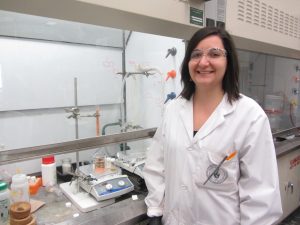 The 1st prize (€ 1,500) was awarded to Claire Sauvée of the Institute of Radical Chemistry (ICR) of the University of Aix-Marseille. His work has focused on the synthesis of new agents allowing the analysis of new molecules by Nuclear Magnetic Resonance (NMR). The 2nd prize (€ 500) was awarded to Thomas Buyck of the Ecole Polytechnique Fédérale de Lausanne for his work on the synthesis and use of molecules mimicking non-natural amino acids (3D). This will facilitate, for example, the development of new drugs with the ability to control their properties.
The 1st prize (€ 1,500) was awarded to Claire Sauvée of the Institute of Radical Chemistry (ICR) of the University of Aix-Marseille. His work has focused on the synthesis of new agents allowing the analysis of new molecules by Nuclear Magnetic Resonance (NMR). The 2nd prize (€ 500) was awarded to Thomas Buyck of the Ecole Polytechnique Fédérale de Lausanne for his work on the synthesis and use of molecules mimicking non-natural amino acids (3D). This will facilitate, for example, the development of new drugs with the ability to control their properties.
The 2014 winners
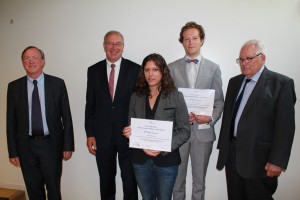 The 1st prize was awarded to Laurent Debien (Ecole Polytechnique de Palaiseau) for his work on the study of the reactivity of radical species known to be uncontrollable. Now working at Stanford University (USA), he is interested in the synthesis of a powerful natural herbicide. A 2nd prize was awarded to Adèle Renaud (IMN in Nantes) for her studies on promising photovoltaic cells for the production of renewable energy.
The 1st prize was awarded to Laurent Debien (Ecole Polytechnique de Palaiseau) for his work on the study of the reactivity of radical species known to be uncontrollable. Now working at Stanford University (USA), he is interested in the synthesis of a powerful natural herbicide. A 2nd prize was awarded to Adèle Renaud (IMN in Nantes) for her studies on promising photovoltaic cells for the production of renewable energy.


